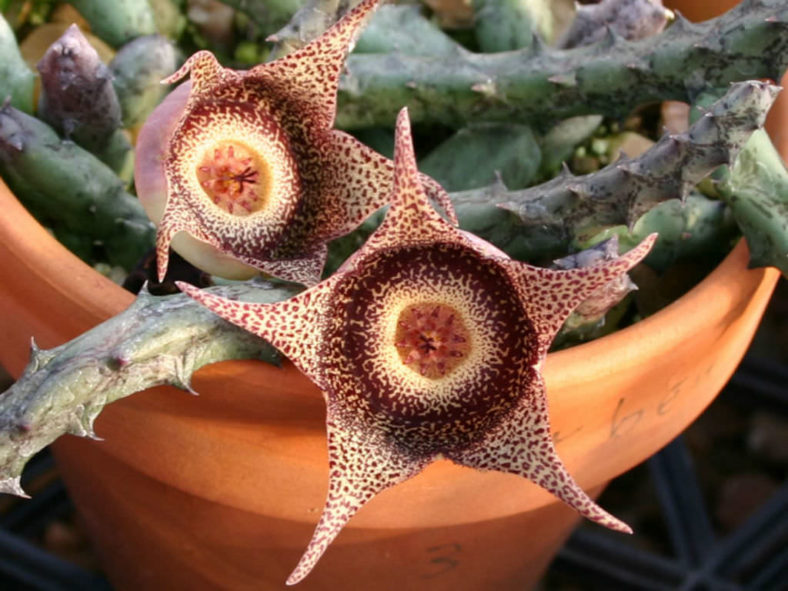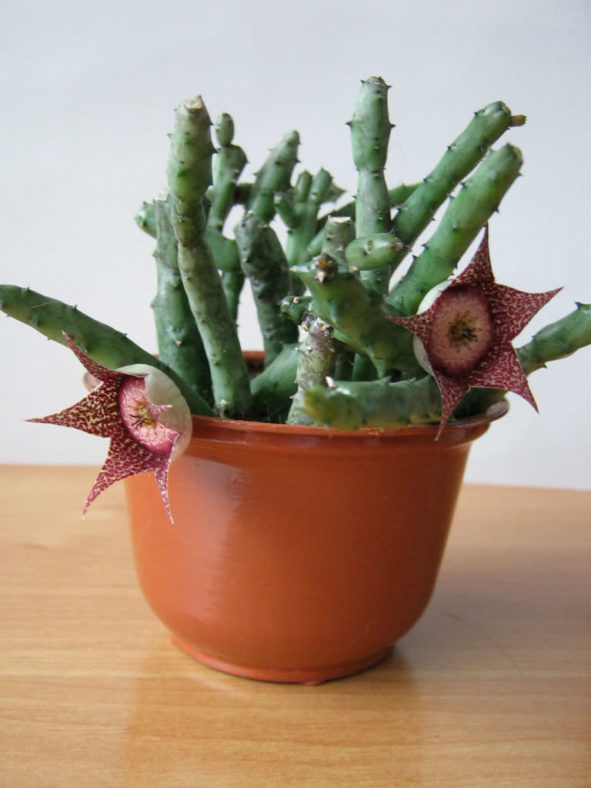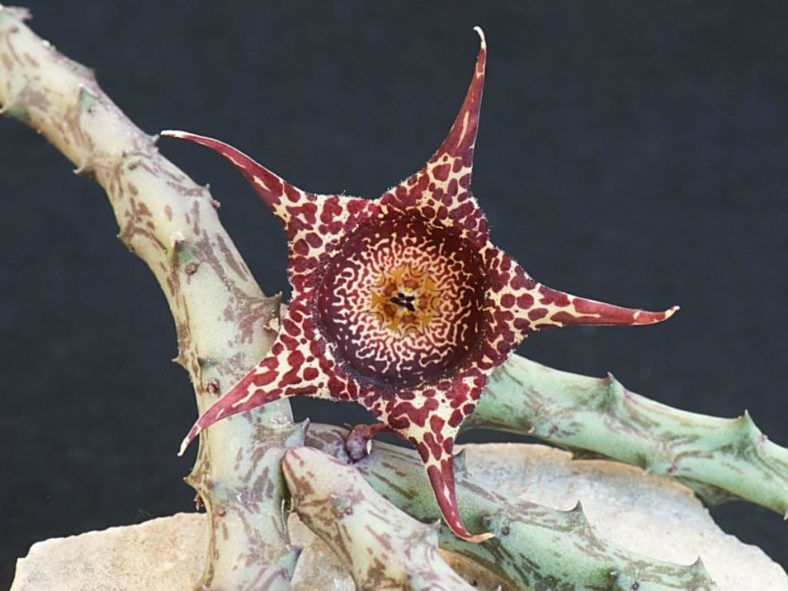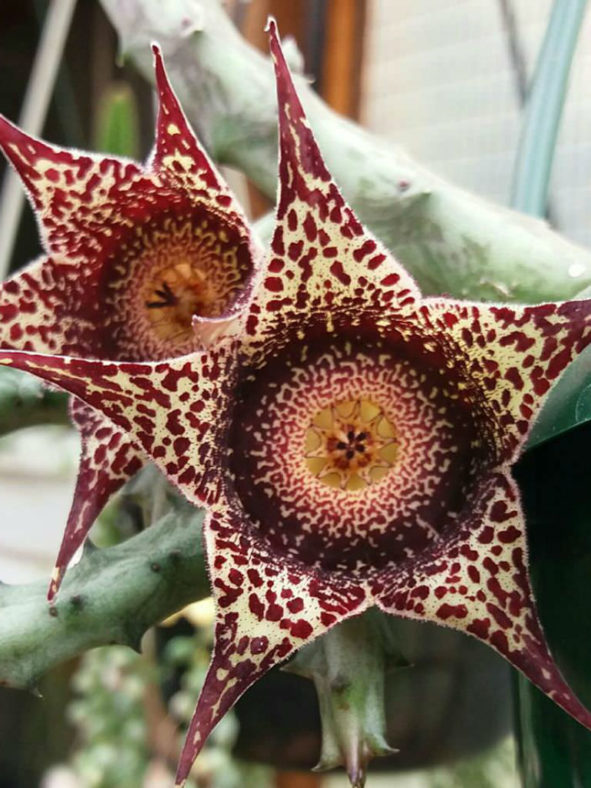Scientific Name
Orbea hardyi (R.A.Dyer) Bruyns
Synonym(s)
Ceropegia hardyi, Orbeanthus hardyi, Stultitia hardyi
Scientific Classification
Family: Apocynaceae
Subfamily: Asclepiadoideae
Tribe: Ceropegieae
Subtribe: Stapeliinae
Genus: Orbea
Origin
Orbea hardyi is native to South Africa. It grows on rock ledges, cliffs, and outcrops from Soutpansberg in Limpopo to around the settlement of Moremala in the Mpumalanga province.
Description
Orbea hardyi, also known as Orbeanthus hardyi, is a small succulent with slender prostrate stems with tubercles arranged into four rounded angles, each tapering into a short conical tooth. It has a sprawling habit and can form a mat up to 3.3 feet (1 m) in diameter. The stems can grow up to 12 inches (30 cm) long and 0.5 inches (1.2 cm) in diameter, branching all along length. They are green with longitudinal purple-brown stripes and blotches.
In late summer and fall, this plant produces inflorescence, usually towards the stem base, of 1 to 2 flowers opening in gradual succession from a very short stalk. The flowers are almost flat to shallowly bowl-shaped when fully open and can reach up to 3 inches (7.5 cm) in diameter. The corolla is cream suffused with purplish on the outside and with clavate maroon to white papillae in the lower half of lobes and the area below the lobes, otherwise smooth, purple-red to maroon on lobes becoming coarsely mottled with cream towards their bases, purple-red to brighter red and more finely spotted with cream on annulus and cream in the tube. The corona is raised above the base of the tube on a short pentagonal stalk and is similarly colored to the corolla, except for the lobes that are all purple-red or darkly barred along their margins.

Hardiness
USDA hardiness zone 9b to 11b: from 25 °F (−3.9 °C) to 50 °F (+10 °C).
How to Grow and Care
Several species are fairly easy to grow. Others, often those with slightly hairy stems and the more unusual flowers, are more challenging and require careful watering (with some fertilizer) during the growing season and complete water withdrawal during the winter months. A minimum winter temperature of 10°C (50°F) is acceptable, providing plants are kept dry. A heated growing bench or incubator may help delicate plants get through the colder months. However, many species live under shrubs in their habitat and prefer light shade rather than full sun.
A gritty compost is essential, and clay pots are advisable for the more delicate species. Some growers prefer mineral-only compost to minimize the chance of a fungal attack on the roots. A layer of grit on the surface of the compost prevents moisture from accumulating around the base of the stems.
Keeping Stapelias and their roots free of pests such as mealybugs is the key to success, as fungal attacks often result from damage to stems by insects.
See more at How to Grow and Care for Stapelia.
Links
- Back to genus Orbea
- Succupedia: Browse succulents by Scientific Name, Common Name, Genus, Family, USDA Hardiness Zone, Origin, or cacti by Genus
Photo Gallery
Click on a photo to see a larger version.


